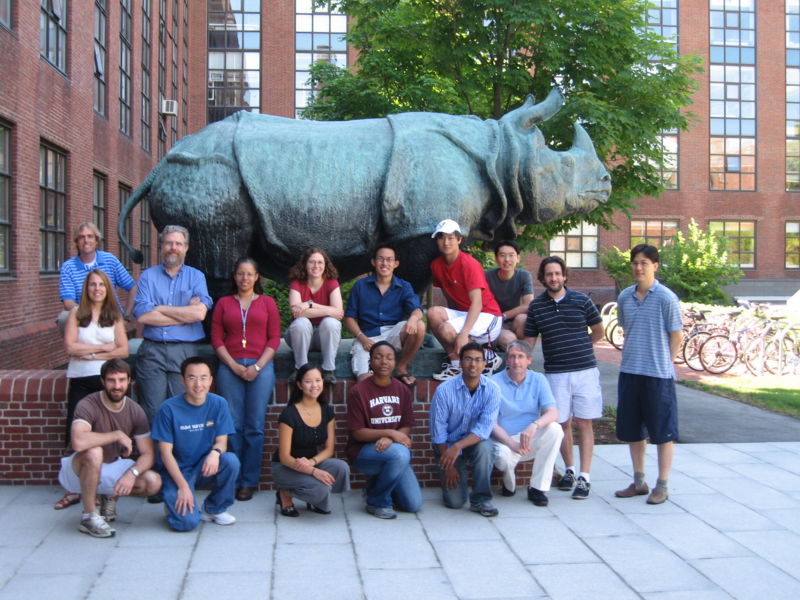Harvard
From 2007.igem.org
(Difference between revisions)
(→The Harvard University 2007 iGEM Team) |
|||
| Line 37: | Line 37: | ||
This year Harvard's team consisted of 8 undergraduate students, with backgrounds in molecular and cellular biology, biochemistry, and computer science. With the help of 6 faculty advisers and 4 teaching fellows, plus one education advisor, they devised and executed three separate projects all interrelated: | This year Harvard's team consisted of 8 undergraduate students, with backgrounds in molecular and cellular biology, biochemistry, and computer science. With the help of 6 faculty advisers and 4 teaching fellows, plus one education advisor, they devised and executed three separate projects all interrelated: | ||
| - | + | <p style = "font-size:150%;"><b>Stick-<i>E. Coli</i></b></p> | |
# | # | ||
#Exploration of cell surface targeting by using interchangable and linkable aptamers (adaptamers), and an Lpp-OmpA fusion protein for surface-displayed streptavidin. | #Exploration of cell surface targeting by using interchangable and linkable aptamers (adaptamers), and an Lpp-OmpA fusion protein for surface-displayed streptavidin. | ||
#Reconstitution of a circadian oscillator from cyanobacteria into E. coli.]] | #Reconstitution of a circadian oscillator from cyanobacteria into E. coli.]] | ||
Revision as of 16:46, 10 July 2007
Find the Harvard iGEM 2007 wiki [http://openwetware.org/wiki/IGEM:Harvard here].
| Harvard University 2007 iGEM Team | ||
Students
Education Advisor
|
Teaching Fellows
Faculty Advisors
| |
The Harvard University 2007 iGEM Team
This year Harvard's team consisted of 8 undergraduate students, with backgrounds in molecular and cellular biology, biochemistry, and computer science. With the help of 6 faculty advisers and 4 teaching fellows, plus one education advisor, they devised and executed three separate projects all interrelated:
Stick-E. Coli
- Exploration of cell surface targeting by using interchangable and linkable aptamers (adaptamers), and an Lpp-OmpA fusion protein for surface-displayed streptavidin.
- Reconstitution of a circadian oscillator from cyanobacteria into E. coli.]]
